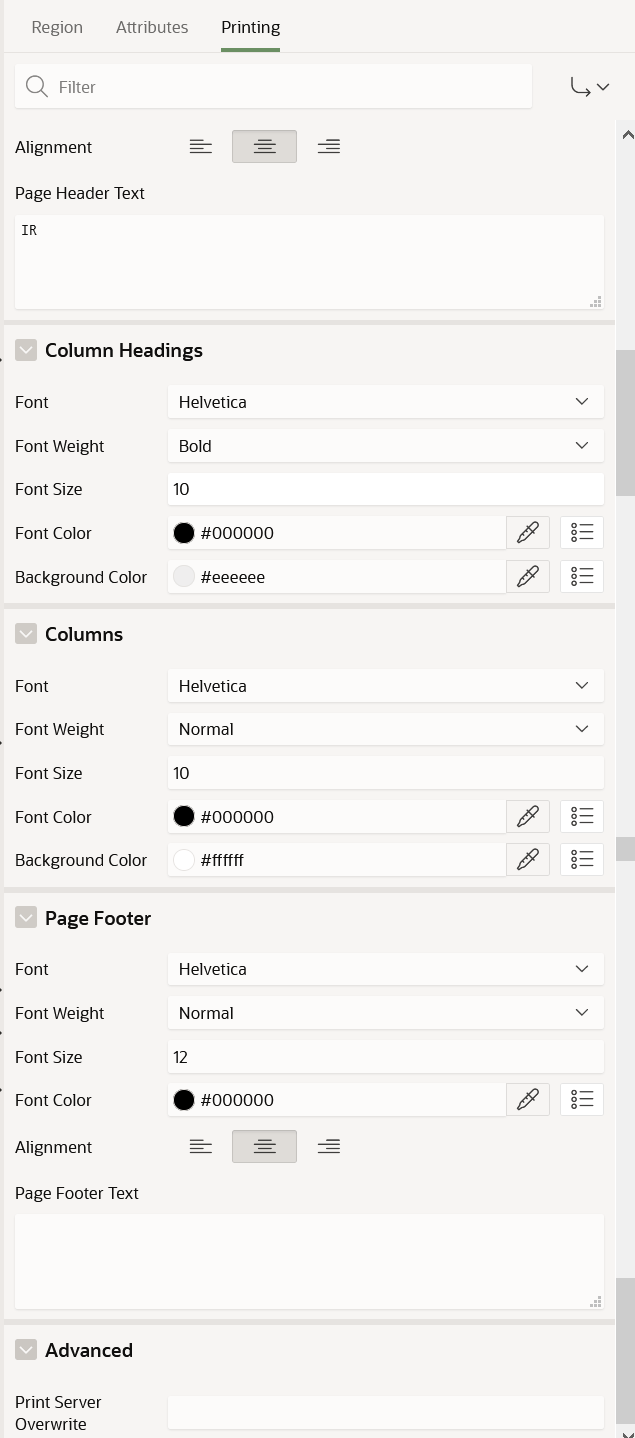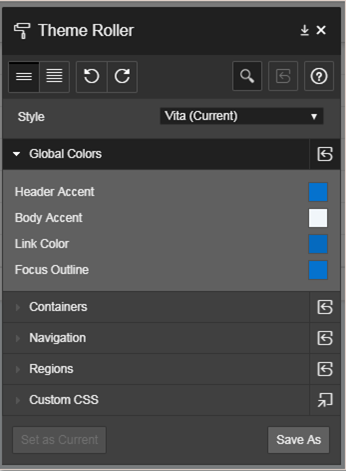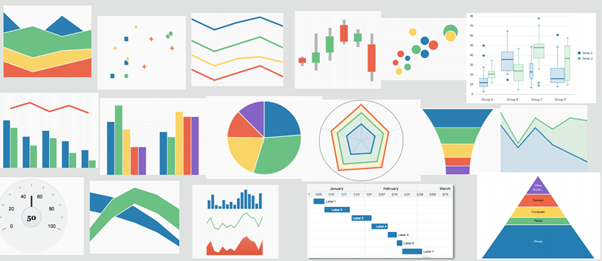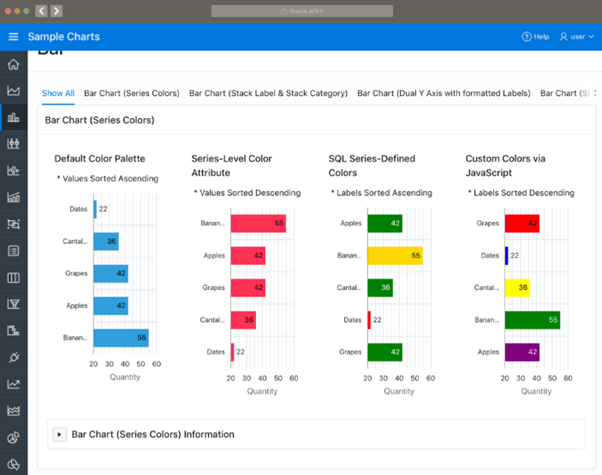The A to Z of Oracle APEX

Best Kept Secrets - Part 2
By Dermot Murray, Inoapps
Oracle APEX is one of the world's leading low code development tools. In a continuation of my latest blog "The A to Z of Oracle APEX" I set myself the challenge of sharing some more of APEX's best kept secrets. It's time for N - Z...
N is for New Features
The move to Cloud-based solutions has led to a fundamental shift in mindset with regards to platform and applications upgrades. Many of the early projects that the Inoapps team delivered using Oracle APEX 4.x and 5.x fell into the classic cycle of "if it aint broke, don't fix it". APEX was stable and reliable, it remained compatible with new browser versions, tools, and critical security patches. Consequently, many of our customers were happy for their applications to remain on old versions of APEX, with content and happy users, but no real innovation. However, with the move to a cloud-based model, delivered primarily on Oracle PaaS, it is now far easier to continually update the APEX platform to the latest release. Where once we would have had to extend and augment APEX with custom code or plug-ins, the continued evolution of the tool with new capabilities means that we deliver incremental benefits through innovation, all in a #LowCode framework. What's not to love?
O is for ORDS
The "engine room" of Oracle APEX, powering traffic and communications through its lightweight, efficient and low cost architecture. In times past Oracle APEX would often have been deployed with a separate web tier node, but the deployment of ORDS as an integral component of the APEX toolkit means that the frequent compatibility, performance and security problems of old are long forgotten.
P is for PDF Printing
A common use case that the Inoapps team encounters is a desire to produce PDF outputs from our business applications. For many years this required the use of BI Publisher, a powerful but prohibitively expensive tool for all but the richest clients. However, new features have been delivered in the last year that now enable true PDF printing straight from APEX, delivering seamless PDF printing straight from the browser. If the business requirements are more complex, with highly formatted, pixel perfect outputs, then APEX Office Print provides a low cost, cloud-based solution to deliver even the most complex of layouts, however, we now find that almost all of our customer requirements for PDF printing can be delivered using core functionality.

Q is for QR Codes
COVID "Track and Trace" has seen the resurgence of an often overlooked technology, the humble QR code. A customer came to us recently with a requirement to print QR codes on "job cards" to be assigned to their workforce for daily activity. When complete, the employee would return the card to the foreman who would simply scan the QR code on their phone and book the task as finished. Using the APEX engine, the Inoapps team embedded a QR printing font into an output file, combined with an ORDS based web service linked to a URL embedded in the QR code. The outcome? An end to end QR solution, enabling an efficient business process, all delivered through APEX.
R is for REST
Modern cloud-based architectures rely on a REST-based communications framework to enable secure, robust and highly performant communication between platforms. Using APEX as an integration platform is one of the most common use cases the team at Inoapps deploy, leveraging the inbuilt REST platform within APEX to orchestrate the transit of data across myriad platforms.
S is for Social Sign In
Many of the applications that we deliver to our customers are corporate applications serving internal users, and are therefore normally deployed through Single Sign On to a central corporate Active Directory infrastructure. However, we also see the steady growth of applications that wish to link with "Social Sign In" frameworks such as Facebook, Google or personal email. The latest APEX releases include an inbuilt integration framework into all of the main Social Sign In platforms, turning deployment into a simple configuration exercise instead of an arduous development task.

T is for Translations
Our expansion into new regions and markets has meant that our customers often request our business applications be deployed in multiple languages and character sets. In many application development platforms, this would require multiple versions of the application to be developed and deployed, increasing cost and causing significant support headaches. Oracle APEX offers Translatable Application Attributes, enabling multiple character sets and languages to be used in a single application, presenting users with a UI rendered in their local language. This is all delivered in a single application instance using dynamic translation - in APEX.
U is for Universal Theme
This is one of the most important features delivered by the Oracle APEX team over recent years. The ability to tailor every page of any application, cascaded from a central theme, allowing myriad user interface configurations, has changed the game for #LowCode development. The black art of styling CSS sheets to enable beautiful business applications has been turned into a commodity feature that even the most novice of developers can undertake.

V is for Visualisation
Using APEX as a low cost reporting and analytics engine is another very common occurrence - collating data from multiple sources, and delivering it to users in a simple and intuitive manner. The value of reporting and analytics solutions can be significantly enhanced through the use of data visualisation techniques. The good news? APEX comes pre-packaged with a powerful suite of Jet enabled visualisation tools, straight out of the box. Delivering enhanced reporting and analytics without the need for external third party reporting tools - that’s the value that APEX can deliver.


W is for Wizards
Who doesn't love a wizard? Yes, it is great to be able to fine tune and hone a given page or function, nurturing it to deliver that perfectly crafted user experience. However, for all those simple pages - the admin functions and page end utilities that serve a simple function to a subset of users - why would a #LowCode developer do anything else other than generate a standard output through the myriad inbuilt wizards? Increased productivity, higher quality and consistent user experience. What's not to love?
X is for XSS or Cross Site Scripting
One of the most common routes for hackers to gain entry to web-based applications is through the use of Cross Site Scripting techniques, when attackers save malicious data in a web site and the site renders this data as code that executes in the user's browser. Oracle APEX components escape all output by default to prevent this class of attacks. One less thing to worry about in a #LowCode environment.
Y is for YouTube
Stuck on an issue? Wanting to get started, or need some expert help. A quick search on Google shows over 230,000 results for Oracle APEX on YouTube. I have no idea how many hours of content that represents, but it goes to show the depth and passion of the APEX community.
Z is for Zzzzz - Dark mode.
Much loved by the hipsters and generation Z, dark mode is the badge of honour for any modern development platform - and is natively available in Oracle APEX as a simple configuration option.
Our APEX Team has been focused exclusively on Oracle APEX development activity for 15 years and has seen a solved almost every challenge out there. If you have any questions about the features and examples above, or would like to discuss a specific challenge your organisation has, please contact us today!
